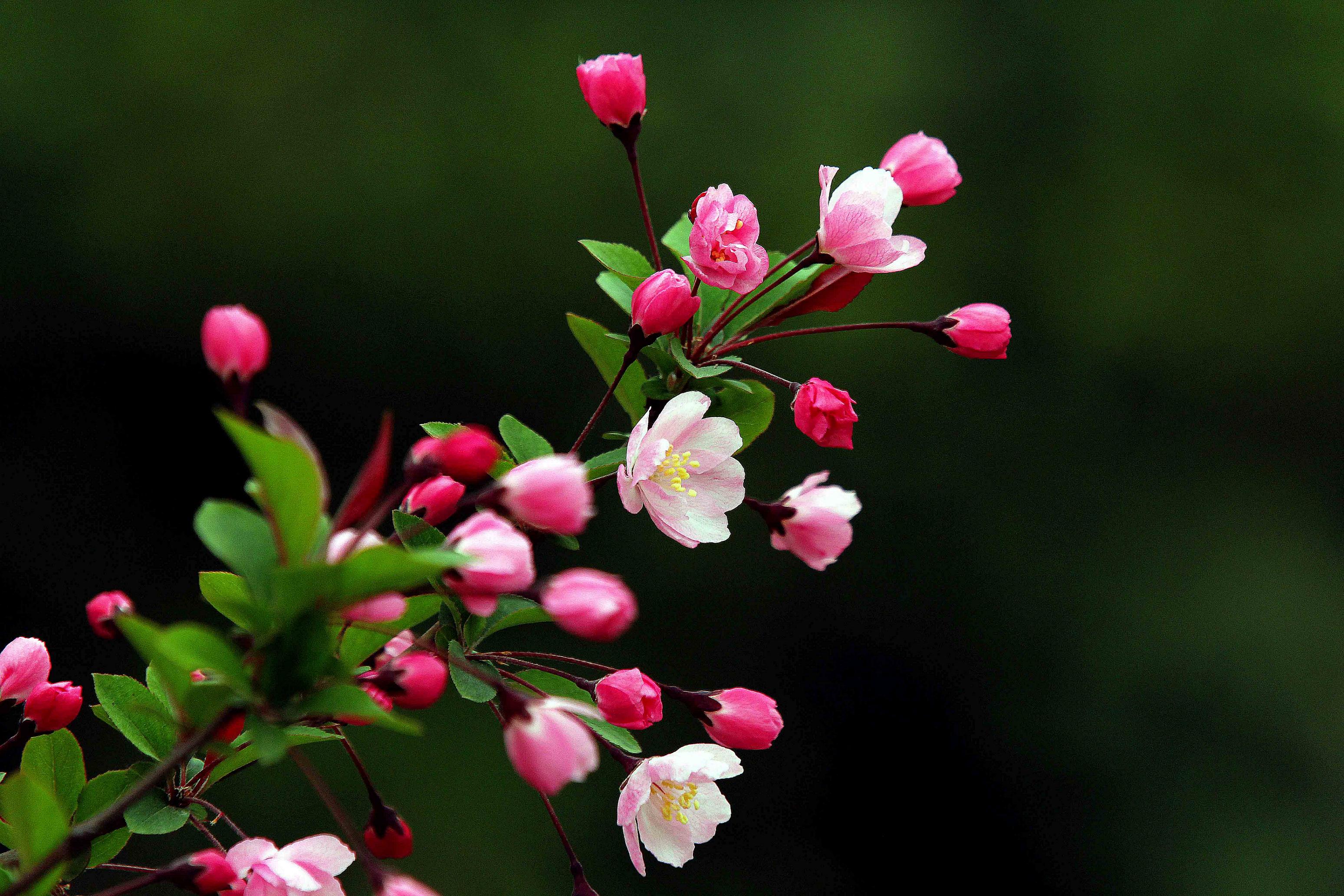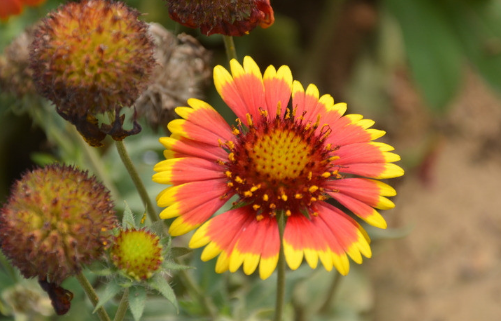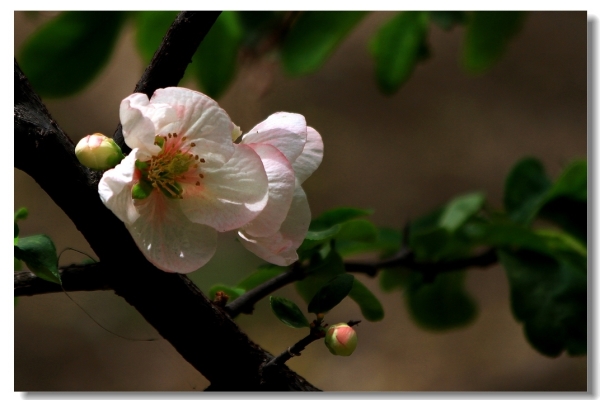Maintenance methods of Malus vulgaris
A beautiful flower is naturally inseparable from meticulous maintenance. Do you know how to raise a weeping begonia?
Begonia should be placed in a well-ventilated environment with sufficient light and a temperature of 15-28 ℃. Bonsai can withstand a low temperature of-5 ℃. Summer potted plants should be sunshaded, spraying water to increase humidity and reduce environmental temperature. In winter, you don't need to put the bonsai indoors, just bury the pot in the soil. There must be sufficient water in the growing season, and no stagnant water shall prevail to prevent rotting roots. It should be watered more in spring and summer, and watered once in the morning and evening when it is hot in summer. In case of plum rain and long-term rainfall, it should be drained in time to prevent stagnant water and rot roots in the basin. In autumn, watering should be reduced to restrain the growth of Begonia and prepare for winter.
Potted Tripterygium should be treated with thin cake fertilizer once a month in the growing season, quick-acting phosphate fertilizer once during flower bud differentiation, and 2-3 times of available phosphorus fertilizer during flower bud differentiation, such as 0.2% potassium dihydrogen phosphate plus 0.1% urea mixture, to promote the completion of flower bud differentiation; fertilization should be stopped after defoliation in autumn to before sprouting in spring. Pruning should be carried out during dormancy or after anthesis, cut short branches, promote lateral branches, increase the formation of flower buds, and promote the plant to form a good plant shape. It is best to turn the basin in early spring or late autumn and put rotten barnyard manure or cake manure as base fertilizer at the bottom of the basin.

Such a beautiful weeping begonia, after flowering, the fruit is sour and sweet, and the fruit can be made into candied fruit, both for viewing and eating, is there any reason for you to refuse to grow one indoors?
Culture methods and matters needing attention of weeping Begonia
Selection of pot soil for culture method of weeping begonia
When potted, we can choose the culture soil mixed according to the proportion of 4 parts of garden soil, 1 part of river sand, 4 parts of rotten leaf soil and 1 part of organic fertilizer. Flowerpots can choose simple ones to create beautiful flowerpots with hanging branches and begonia bonsai.
Light and temperature
The weeping begonia is more suitable for growth in a warm and sunny environment. The suitable temperature for growth is between 15 ℃ and 28 ℃. You can endure the low temperature of-5 ℃ in winter, so you can bury the flowerpot in the soil instead of putting it into indoor heat preservation. When the summer temperature is high and the sun is strong, it is necessary to properly shade the sun and cool it down by spraying water.
Water and fertilizer management
Weeping begonia should have plenty of water in the growing season, but do not accumulate water in the basin. Spring taboo and summer can be watered more, and summer can also be watered every morning and evening when it is hot. Rainy season should pay attention to no stagnant water in the basin, timely drainage, to prevent rotten roots, autumn to reduce watering. In the growing season, hanging begonia should apply thin fertilizer and water once a month, apply some phosphate fertilizer to promote flowering before flowering, and stop fertilizing after falling leaves in autumn.
Matters needing attention in breeding and pruning of Begonia
Pruning the branches of weeping begonia can promote branching, control plant type and make it blossom more. Pruning is better after flowering or during dormancy.
Change the basin
Weeping begonia can turn the basin in early spring or late autumn, change the basin, and prune the roots and branches, and apply some basic fertilizer when putting on the pot.
Diseases and insect pests
The common pests of weeping begonia are wax scale, apple aphid, longicorn beetle and red spider, and the disease is mainly rust.
Propagation methods of Tripterygium
Propagation method of Tripterygium by cuttage
Tripterygium generally choose the propagation method of cutting, which can be divided into spring cutting and summer cutting. Spring planting usually takes place before and after the wake of the sting.
Put sandy soil in the flowerpot and insert the side branches cut from the body (usually 12murmur16cm in length) into the soil at a depth of 1/2 of the soil layer.
Slightly compact the soil, pour the water thoroughly, put it in a cool and ventilated place, and keep the basin soil moist.
Ramet breeding method
The method of isolating plants is simpler.
When the female parent of weeping begonia sprouts in March every spring, separate the small buds from the roots, protect the growing roots, and let them grow directly in the new basin soil.
Strip breeding method
When weeping begonia is used for strip propagation, it is best to choose summer summer days.
Select several twigs near the roots of the female parent, bend them and bury them in the soil at a depth of about 15 cm, exposing most of the tops of the branches to the ground. Wait until the Qingming Festival in the following year, it can be put into the basin alone.
Key points of maintenance of weeping begonia
Moisture content
Weeping begonia needs sufficient water during its growing period, and it should be watered more in spring and summer. The amount of water should be controlled in autumn and poured thoroughly when the surface of the basin soil is dry.
Fertilizer
In the growing period, we should follow the principle of "applying thin fertilizer frequently" and apply dilute fertilizer every month. The flower bud stage can increase the phosphate fertilizer and promote the increase of the number of flowering crabapple. After the fallen leaves enter the dormant period in autumn, fertilization should be stopped. Fertilizing and curing will not be carried out until the beginning of spring next year.
- Prev

How to plant chrysanthemum seeds
Sowing time this plant likes the high temperature and dry environment, so it is generally chosen in summer when there is plenty of light. Pre-treatment 1, soak the seeds in warm water for seven or eight hours, let the seeds fully absorb water, expand and become larger. Even after getting bigger, the particles are still very small.
- Next

Culture methods of olive flowers
When watering olive flowers, it is necessary to keep the soil moist and ensure sufficient moisture. Do not dry the soil, causing olive flowers to lack of water and leaves to die. Young trees fertilizing olive flowers are mainly fertilized with nitrogen fertilizer, properly mixed with other fertilizers, and based on the principle of frequent and thin application, usually once every two months.
Related
- Fuxing push coffee new agricultural production and marketing class: lack of small-scale processing plants
- Jujube rice field leisure farm deep ploughing Yilan for five years to create a space for organic food and play
- Nongyu Farm-A trial of organic papaya for brave women with advanced technology
- Four points for attention in the prevention and control of diseases and insect pests of edible fungi
- How to add nutrient solution to Edible Fungi
- Is there any good way to control edible fungus mites?
- Open Inoculation Technology of Edible Fungi
- Is there any clever way to use fertilizer for edible fungus in winter?
- What agents are used to kill the pathogens of edible fungi in the mushroom shed?
- Rapid drying of Edible Fungi

